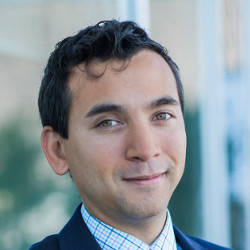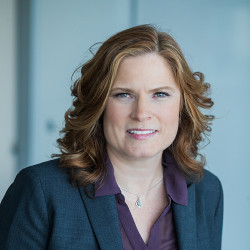Tax-advantaged Health Spending
Jan 01, 2014
 If you own a small business and are tired of paying medical and dental bills for you and your family with personal after-tax dollars, you should investigate a little-known section of the Income Tax Act.
If you own a small business and are tired of paying medical and dental bills for you and your family with personal after-tax dollars, you should investigate a little-known section of the Income Tax Act.
Private Health Services Plans (PHSPs) were launched by Canada Revenue Agency (CRA) in 1989. Once set up, a PHSP allows for the deduction of qualified medical expenses by corporations, proprietors, and partnerships on behalf of their employees and their family members. In turn, the PHSP returns the amount paid for medical expenses, tax-free to the employee. For corporations, proprietorships, and partnerships, the benefits can provide substantial savings for employees and their family members not covered by other group health plans.
Establishing a PHSP can help retain existing employees and attract new employees to growing businesses. A low-cost plan, with no deductible, no monthly premiums and no renewal charges, a PHSP is an effective way for a business to convert all health, medical, and dental expenses to non-taxable medical benefit for employees, while allowing the company to benefit from a fully tax-deductible business expense. This can result in significant savings for small businesses or large corporations.
PHSP and Traditional Group Health Insurance Plans
A PHSP can be set up as a cost-effective alternative to a traditional group health insurance plan. It can also work in conjunction with a group plan to deduct expenses not covered by the group plan. Even the best group plans do not cover 100% of expenses, especially when it comes to larger expenses such as restorative or orthodontic dentistry, eyeglasses and contacts, or prescription medication. Commonly, group benefit plans have some element of co-insurance and a deductible, payable by the employee, on covered services.
PHSP Benefits
Aside from its tax-free benefit, another attribute that makes a PHSP attractive is that it is flexible. If you have a PHSP balance of $2,000, you can pick and choose which medical expenses you would like to use against that balance. For example, you can spend a portion of the total sum for the dental needs of your children and for the portion of your family prescriptions that weren’t covered under another plan. In general, you can tailor your PHSP to suit your family's health needs. In addition, employees can enjoy the benefits of a PHSP as well. Generally, employees do not have a choice as to what medical aspects need more or less coverage in their group plans. For instance, one employee may want more prescription coverage but cannot do anything about it because of the limitations of their employer's health insurance plan. However, with PHSPs, employees have the freedom to select the coverage that they want and decide when and where their money will be spent.
PHSP Eligibility
When it comes to eligibility, PHSPs are very flexible. Both unincorporated and incorporated businesses can benefit from PHSPs. Any type of medical or dental bill, as long as it is valid, is covered by PHSPs as well. A PHSP can be set up for a corporation with only shareholders as employees but, benefits to shareholders will qualify only if the shareholders received the benefit in their capacity as employees.
In general, there are no rules about how many workers a certain establishment needs to maintain in order for it to qualify for a PHSP. However, the CRA has created some rules that govern the implementation of PHSPs. Where there are no other employees, or fewer than 50% of the employees are arm's-length employees, the maximum allowable deduction for a sole proprietor and dependents will be an annual amount equal to the total of $1,500 for each of the sole proprietor, spouse, and dependents age 18 or more, plus $750 for each dependent under 18. Thus, for a sole proprietor with a spouse and two children under 18, the annual allowable deduction would be a maximum of $4,500.
Third-Party Administrator Required
You need a third-party administrator to set up and manage your PHSP. Depending on the provider, the cost normally includes an initial one-time setup fee that can range from $200 to $350 and a claim fee of 10% plus GST for each underlying medical claim.
PHSPs Offer Significant Tax Savings:
Example Sam is an incorporated business owner who has $2,000 of CRA-qualified medical expenses. His annual income is $140,000 and he has a marginal tax rate of 43.7%. In order for him to pay a $2,000 medical expense, he would have to earn $3,552 of gross income. There is a significant difference between those two numbers. However, if he had a PHSP set up, instead of paying $1,552 in taxes he would only pay $210 in total fees for an overall savings of $1,342. See the table below for further details:| Private Health Services Plan Comparison | Health Expense (after tax) | After Tax Services Plan |
| CRA Qualified Medical Expenses | $2,000 | $2,000 |
| Marginal Tax Rate | (43.7%) | N/A |
| Admin Fee + GST | N/A | $210 |
| Gross Income Required to Pay | $3,552 | $2,210 |
| Saving to Gross Income | $1,342 |
Based on this example, any business can save a significant amount of gross income. Additionally, all the costs are 100% tax-deductible for the employer and are a non-taxable benefit to the employee.
A PHSP represents a private defined contribution health spending account. The business decides on the contribution to benefits; the employee and family decide on which health needs they want to spend it on. The only limits are the dollars in the account.
If you are self-employed or a business owner, ask your Rogers Group Financial advisor about tax-advantaged health spending.
Estate Planning Misconceptions
In this 5-minute webinar, we explore an important but often misunderstood area of financial planning.
Learn More







